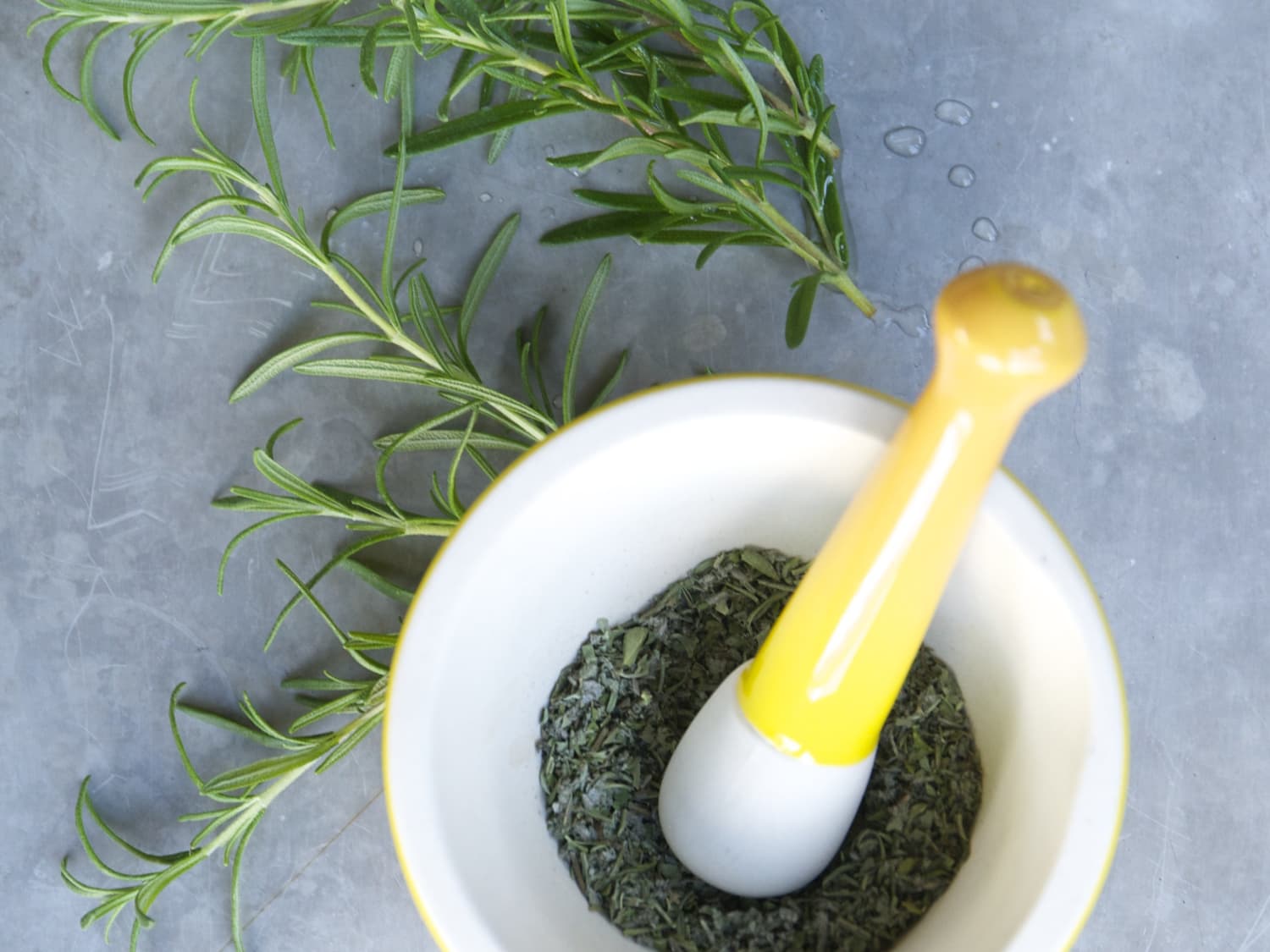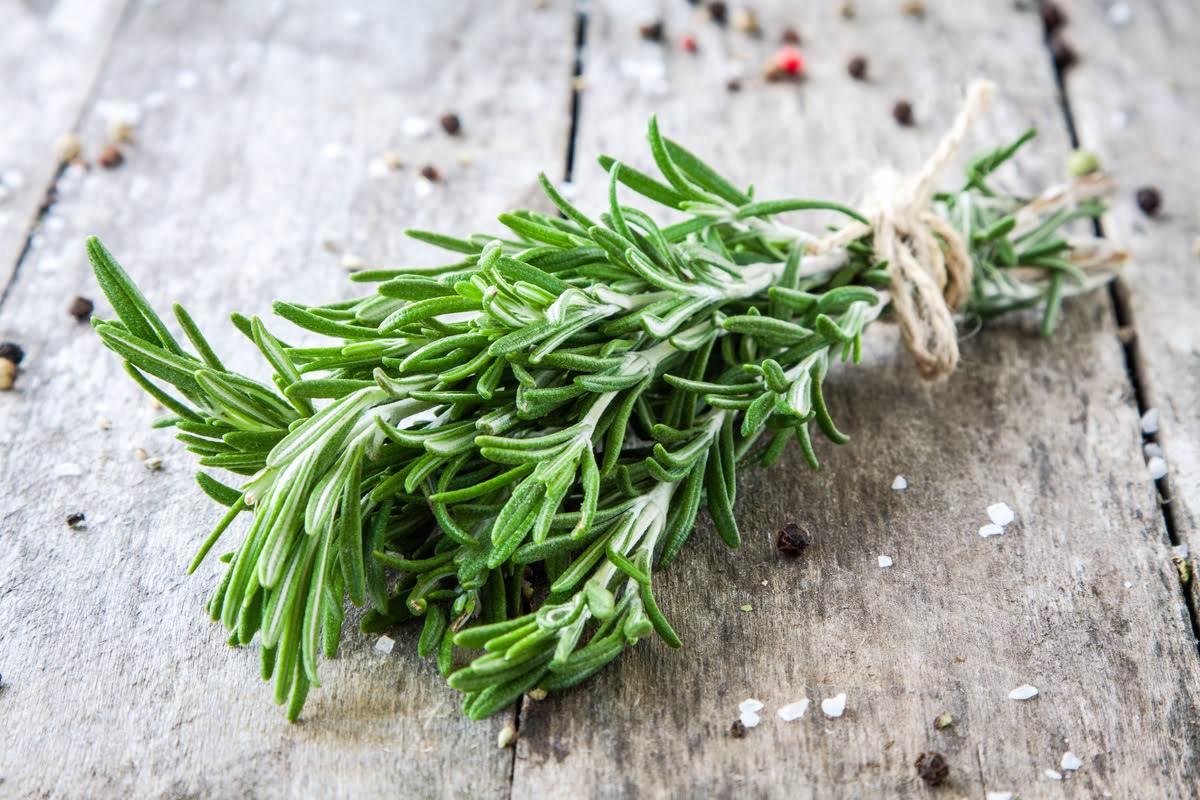Home>Types of Gardening>Edible Gardening>How Much Is A Sprig Of Rosemary


Edible Gardening
How Much Is A Sprig Of Rosemary
Published: January 29, 2024
Learn the cost of a sprig of rosemary for your edible gardening needs and start growing your own herbs at home.
(Many of the links in this article redirect to a specific reviewed product. Your purchase of these products through affiliate links helps to generate commission for Chicagolandgardening.com, at no extra cost. Learn more)
Table of Contents
Introduction
Welcome to the world of edible gardening! If you have a green thumb and a love for cooking, then growing your own herbs can be a rewarding and flavorful endeavor. One herb that stands out in the garden is rosemary, with its aromatic fragrance and versatile uses. Whether you’re a seasoned gardener or just starting out, learning about the wonders of rosemary can inspire you to add this herb to your edible garden.
Rosemary, scientifically known as Rosmarinus officinalis, is a woody, perennial herb that belongs to the mint family. Originating from the Mediterranean region, it has become popular worldwide due to its distinct flavor and medicinal properties.
What makes rosemary a staple in many kitchens is its ability to add depth and complexity to a variety of dishes. Its pine-like aroma and robust taste complement a range of ingredients, making it a versatile herb for both savory and sweet recipes.
Aside from its culinary uses, rosemary also offers a plethora of health benefits. Its active compounds, such as rosmarinic acid and carnosic acid, possess antioxidant and anti-inflammatory properties. These compounds have been found to support digestion, boost cognitive function, reduce inflammation, and even enhance hair growth.
If you’re interested in growing your own rosemary, you’ll be delighted to know that it is relatively easy to cultivate. This herb thrives in sunny locations with well-drained soil. You can start by growing rosemary from seed, cuttings, or purchasing a young plant from a local nursery.
Once your rosemary plant is established, you can enjoy a bountiful harvest throughout the year. Fresh rosemary can be stored for several days in the refrigerator or dried for longer shelf life. The earthy, aromatic scent will fill your kitchen and inspire you to experiment with various recipes.
As for the cost and availability of rosemary, it is widely accessible in grocery stores, farmer’s markets, and online retailers. However, growing your own rosemary can save you money in the long run, not to mention the satisfaction of harvesting your own fresh herbs.
In this article, we will explore the many aspects of rosemary, from its unique culinary uses to its health benefits. We will also provide tips on growing and harvesting rosemary, as well as some creative ways to incorporate a sprig of this versatile herb into your meals.
What Is Rosemary?
Rosemary is a fragrant and flavorful herb that has been used for centuries in culinary, medicinal, and spiritual practices. It is a small, evergreen shrub with needle-like leaves that resemble pine needles. The botanical name of rosemary, Rosmarinus officinalis, reflects its traditional use as a medicinal plant.
Native to the Mediterranean region, rosemary is now grown in various parts of the world. It was highly valued by ancient civilizations such as the Greeks, Romans, and Egyptians for its therapeutic properties. The name “rosemary” is said to derive from the Latin words “ros” meaning “dew” and “marinus” meaning “sea,” referring to its preference for coastal regions with a humid climate.
Aside from its aromatic qualities, rosemary is known for its strong flavor profile. The leaves emit a distinct scent that is reminiscent of pine and citrus, making it a popular choice in a wide range of culinary preparations. Its flavor can be described as herbal, slightly bitter, and slightly peppery, adding depth and complexity to dishes.
In addition to its culinary uses, rosemary has a long history of being used for its medicinal properties. Ancient healers believed that rosemary could enhance memory and concentration, improve digestion, relieve pain and inflammation, and strengthen the immune system. It was also used to treat ailments such as digestive disorders, respiratory issues, and skin conditions. Today, modern research has confirmed some of these traditional uses and has discovered new potential health benefits.
Furthermore, rosemary has spiritual and cultural significance in different societies. It has been associated with memory enhancement and used as a symbol of remembrance during memorial ceremonies and weddings. In some cultures, sprigs of rosemary are placed under pillows to promote restful sleep and ward off evil spirits. The herb has also been used in purification rituals and as a protective charm.
Overall, rosemary is a versatile herb that offers not only delightful flavors but also an array of potential health benefits. Its rich history and cultural significance make it a fascinating plant to explore and incorporate into various aspects of our lives.
Culinary Uses of Rosemary
Rosemary is a culinary powerhouse, bringing depth and robust flavor to a wide range of dishes. Its distinctive aroma and taste make it a versatile herb that can elevate both savory and sweet recipes. From roasted meats to baked goods, here are some popular culinary uses of rosemary:
- Roasted Meats: Rosemary pairs exceptionally well with roasted meats, such as lamb, chicken, and beef. Simply sprinkle some fresh rosemary leaves or finely chop them and add them to the meat before cooking. The herb infuses the meat with its earthy flavor, resulting in a mouthwatering dish.
- Grilled Vegetables: Add a touch of rosemary to your grilled vegetables to enhance their flavors. Toss vegetables such as zucchini, eggplant, and bell peppers with olive oil, salt, pepper, and a generous amount of minced rosemary. Grill them until tender and enjoy the delicious medley of flavors.
- Breads and Baked Goods: Incorporate rosemary into your homemade bread and baked goods to give them a savory twist. You can either finely chop fresh rosemary or infuse rosemary oil or butter to add to your dough. The result is a fragrant and aromatic loaf or pastry that will impress your taste buds.
- Sauces and Marinades: Rosemary is a key ingredient in many classic sauces and marinades. Its bold flavor adds complexity to dishes like tomato sauce, mushroom sauce, and marinades for grilled or roasted meats. Infuse your sauce or marinade with a sprig of rosemary and let it simmer to release its flavors.
- Infused Oils and Vinegars: Create flavorful infused oils and vinegars by adding rosemary to the mix. Simply combine fresh rosemary sprigs with olive oil or vinegar and let them infuse for a few weeks. The resulting infusion can be used as a delicious dressing, drizzle, or marinade.
These are just a few examples of how rosemary can be used in the kitchen. Its versatile nature allows it to be incorporated into various dishes, giving them a unique and aromatic twist. Experiment with different culinary combinations to discover your favorite ways to use rosemary, and let your taste buds be your guide.
Health Benefits of Rosemary
Beyond its culinary uses, rosemary offers a wide array of potential health benefits. For centuries, it has been used in traditional medicine for its natural healing properties. Modern research has begun to uncover the science behind these claims. Here are some of the potential health benefits of rosemary:
- Anti-inflammatory Properties: Rosemary contains compounds such as rosmarinic acid and carnosic acid, which have shown anti-inflammatory effects. These compounds may help reduce inflammation in the body, which is linked to various chronic diseases.
- Antioxidant Protection: The antioxidants found in rosemary, such as flavonoids and phenolic acids, help protect the body’s cells from damage caused by free radicals. This antioxidant activity may help prevent oxidative stress and reduce the risk of chronic diseases.
- Improved Digestion: Rosemary has long been used to aid digestion. It may help stimulate the production of digestive enzymes, promote bile flow, and reduce digestive discomfort. Drinking rosemary tea or adding rosemary to your meals can support a healthy digestive system.
- Enhanced Brain Function: The aroma of rosemary has been linked to improved cognitive function, memory, and concentration. Inhaling the scent of rosemary essential oil or incorporating rosemary into your diet may help enhance mental clarity and alertness.
- Promotes Hair Growth: Rosemary has been traditionally used to address hair loss and promote hair growth. It stimulates blood circulation to the scalp, providing nourishment to hair follicles. Massaging rosemary oil into the scalp or using rosemary-infused hair treatments may help promote thicker and healthier hair.
- Aids Respiratory Health: The aromatic compounds in rosemary have been used to relieve respiratory symptoms and support respiratory health. The herb’s natural expectorant properties can help relieve congestion and soothe coughs.
- Supports Immune Function: Rosemary possesses antimicrobial properties that may help protect against certain infections. Additionally, its antioxidants can help strengthen the immune system by neutralizing harmful free radicals.
It’s important to note that while rosemary shows promising health benefits, further research is still needed to fully understand its potential impacts on human health. It is always best to consult with a healthcare professional before using rosemary for medicinal purposes, especially if you have any underlying medical conditions or are taking medications.
Incorporating rosemary into your daily routine, whether through cooking or using it in beauty and wellness rituals, can be a delightful and beneficial addition to a healthy lifestyle.
Growing and Harvesting Rosemary
Growing rosemary in your own garden can be a rewarding experience. This resilient herb is relatively low-maintenance and can thrive in a variety of growing conditions. Here are some tips for successfully cultivating and harvesting rosemary:
1. Planting: Choose a sunny spot in your garden with well-drained soil. Rosemary prefers slightly alkaline soil, so adding some lime or crushed eggshells to the soil can help create the ideal pH level. If you live in a colder climate, consider growing rosemary in a pot that you can bring indoors during winter.
2. Watering: While rosemary is drought-tolerant, it’s important to ensure that it gets enough water during the first year of growth. Once established, the plant requires minimal watering. Allow the soil to dry out between waterings to prevent root rot.
3. Pruning: Regular pruning helps maintain the shape and health of the rosemary plant. Prune in early spring or after the plant has finished flowering. Trim the branches lightly, removing any dead or damaged growth. This encourages new growth and prevents the plant from becoming woody.
4. Harvesting: Rosemary can be harvested as needed throughout the year. Avoid overharvesting, as it can weaken the plant. For best flavor, harvest the sprigs in the morning when the essential oils are most concentrated. Simply pinch off or cut the desired amount of rosemary sprigs, leaving enough foliage for the plant to continue growing.
5. Storing: Fresh rosemary can be stored in the refrigerator for up to a week. To extend its shelf life, you can dry the sprigs by hanging them upside down in a cool, dry place. Once dry, remove the leaves from the stem and store them in an airtight container. Dried rosemary can maintain its flavor for several months.
6. Propagation: Rosemary can be propagated through stem cuttings. Take a 4-6 inch cutting from a healthy rosemary plant, remove the lower leaves, and place the cutting in a pot with well-draining soil. Keep the soil moist and place the pot in a warm, sunny location. Roots should develop within a few weeks.
By following these tips, you can enjoy a thriving rosemary plant in your garden and have an abundant supply of fresh herbs for your culinary endeavors.
Cost and Availability of Rosemary
Rosemary is a widely available herb that can be found in various forms and locations, making it accessible to home cooks and gardeners alike. Here is an overview of the cost and availability of rosemary:
1. Grocery Stores: Most grocery stores carry fresh rosemary in the produce section. It is often sold in small bundles or sprigs, packaged in plastic bags or clamshells. The price can vary depending on the location and quality, but it is generally affordable and accessible year-round.
2. Farmer’s Markets: Farmers’ markets are excellent sources for fresh, locally grown rosemary. Unlike grocery stores, farmers’ markets provide an opportunity to connect with local growers and learn about their cultivation methods. The prices may be slightly higher than grocery stores, but you can often find organic rosemary and support local farmers.
3. Garden Centers and Nurseries: If you prefer to grow your own rosemary, garden centers and nurseries offer young plants or starter kits. Prices can vary based on the size and variety of the plant, but they are generally affordable. This is a great option for those who want a continuous supply of fresh rosemary straight from their garden.
4. Online Retailers: Numerous online retailers offer a wide range of rosemary products, from fresh sprigs to dried leaves, essential oils, and various culinary blends. Online shopping provides convenience and allows you to explore different varieties and unique rosemary-infused products. However, keep in mind that shipping costs and delivery times may apply.
5. Cost-Saving through Growing: Growing rosemary in your own garden or in containers can be a cost-effective way to have a steady supply of this versatile herb. Once established, rosemary plants are relatively low-maintenance and can yield an abundance of fresh sprigs throughout the year. This option not only saves money but also ensures that you have access to fresh rosemary whenever you need it.
Whether you choose to buy fresh rosemary from a store or grow it yourself, it is a reasonably priced herb that offers excellent value for its aromatic flavors and potential health benefits. With its widespread availability, you can easily incorporate rosemary into your culinary creations and enjoy the delightful flavor and aroma it brings to your dishes.
Ways to Use a Sprig of Rosemary
A sprig of rosemary adds a burst of aromatic flavor and a touch of elegance to many dishes. Whether you’re a seasoned chef or just starting out in the kitchen, here are some creative and delicious ways to make the most of a sprig of rosemary:
- Infused Oil: Add a sprig of rosemary to a bottle of olive or grapeseed oil for a fragrant and flavorful infusion. Use the infused oil for dressings, marinades, or as a drizzle over roasted vegetables.
- Herb Butter: Mix finely chopped rosemary leaves into softened butter and refrigerate until firm. This herb-infused butter is perfect for spreading on warm bread, melting over grilled meats, or dolloping onto roasted potatoes.
- Flavored Salts: Combine finely chopped rosemary leaves with coarse sea salt to create a homemade flavored salt. Sprinkle it on grilled meats, roasted vegetables, or even popcorn to add a savory and aromatic kick.
- Roasted Meats and Poultry: Place a sprig of rosemary under the skin of a whole chicken before roasting, or tuck it into a pan of roasting vegetables for added flavor. The heat releases the herb’s oils, infusing the dish with its delightful aroma.
- Infused Syrups: Simmer a sprig of rosemary with sugar and water to create a rosemary-infused syrup. Use it to sweeten cocktails, flavor lemonade or tea, or drizzle over cakes and desserts for an unexpected twist.
- Herb-Infused Vinegars: Add a sprig of rosemary to a bottle of white wine vinegar or apple cider vinegar and let it steep for a few weeks. The resulting herb-infused vinegar can be used in dressings, marinades, or as a splash of flavor over grilled vegetables or salads.
- Herb-Roasted Potatoes: Toss small potatoes with olive oil, salt, and pepper, and then add a few sprigs of rosemary to the mix. Roast in the oven until crispy and golden, infusing the potatoes with the herb’s aromatic flavor.
- Flavorful Soups and Stews: Tie a bundle of rosemary sprigs with kitchen twine and add them to soups, stews, and braises. The herb releases its flavors during the cooking process, infusing the dish with a rich and aromatic taste.
- Herb-Infused Cocktails: Muddle a sprig of rosemary in the bottom of a cocktail shaker to release its oils. Add your favorite spirits, mixers, and ice, then shake and strain to enjoy a refreshing and herbaceous cocktail.
- Fragrant Herb Bundles: Bundle together several sprigs of rosemary with other herbs like thyme, sage, or oregano to create flavorful herb bundles. Use these bundles to infuse flavor when grilling or roasting meats, or add them to simmering sauces or broths for added depth of flavor.
These are just a few examples of the countless ways to use a sprig of rosemary in your culinary creations. The herb’s versatile and robust flavor can enhance a variety of dishes, adding an enticing aroma and a delightful taste to your meals.
Conclusion
Rosemary is truly a powerhouse herb that brings a delightful combination of aroma, flavor, and potential health benefits to the world of edible gardening and culinary exploration. From its origins in the Mediterranean to its widespread popularity today, rosemary has captivated people with its versatility and charm.
We have explored the many facets of rosemary in this article, from understanding its botanical background to discovering its culinary uses, health benefits, and tips for growing and harvesting it in your own garden. Rosemary’s distinct pine-like fragrance and robust flavor make it an essential ingredient in countless dishes, whether you’re grilling meats, baking bread, or infusing oils and vinegars.
Not only does rosemary lend its incredible flavor to dishes, but it also offers potential health benefits. Its anti-inflammatory and antioxidant properties, along with its association with improved digestion, brain function, hair health, respiratory health, and immune support, make it a valuable addition to a healthy lifestyle.
Whether you choose to purchase fresh rosemary from local stores or embark on the rewarding journey of growing your own, this herb is readily available and easily incorporated into your everyday cooking. A sprig of rosemary can elevate the flavors of your favorite recipes, adding a touch of elegance and depth.
So, start experimenting with rosemary in your kitchen today, and let your taste buds be your guide. Explore its culinary versatility, embrace its potential health benefits, and enjoy the process of growing and harvesting this remarkable herb. Unlock the wonders of rosemary in your edible garden, and savor the immense flavor and benefits it brings to your cooking and well-being.










